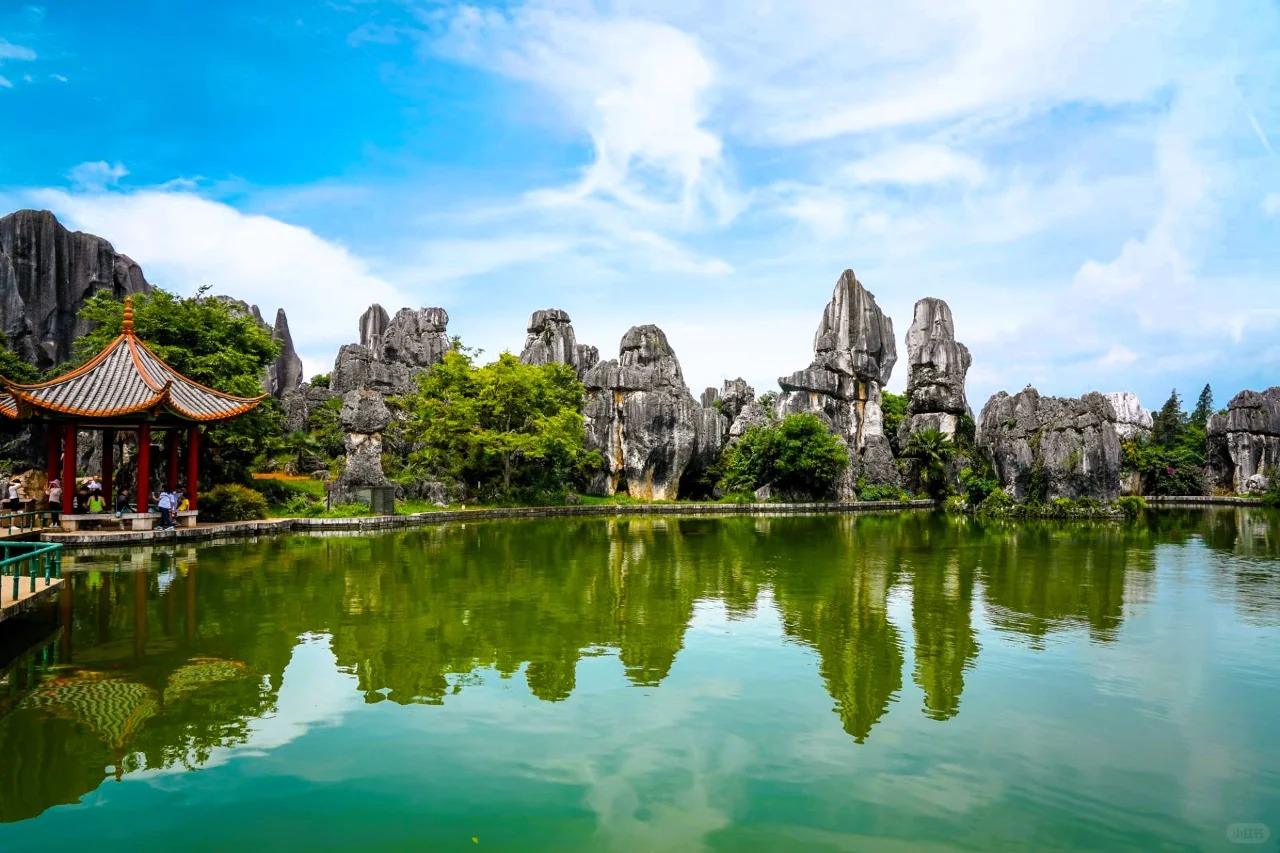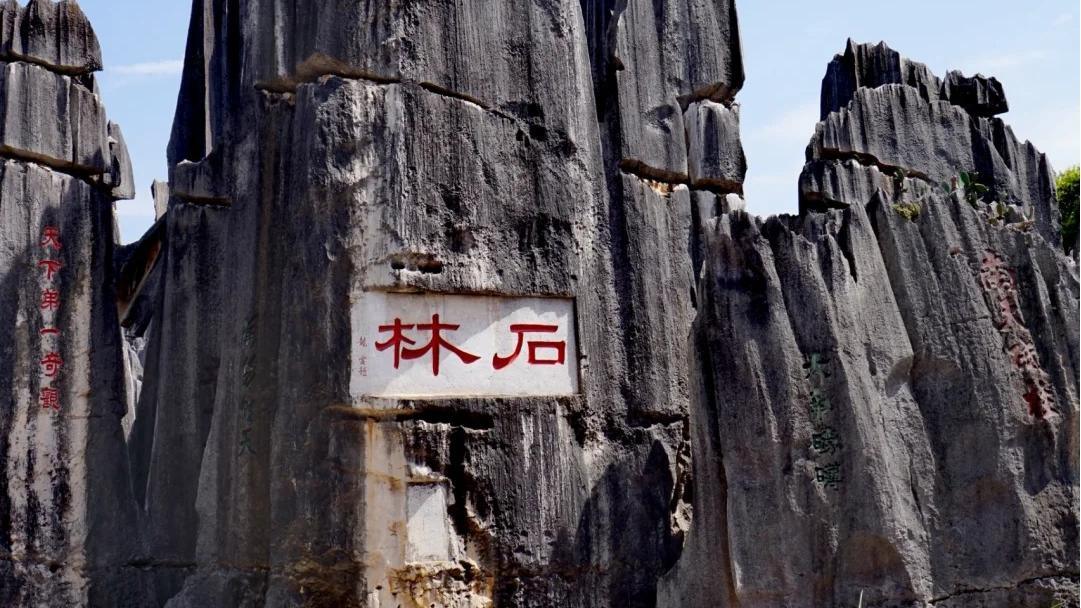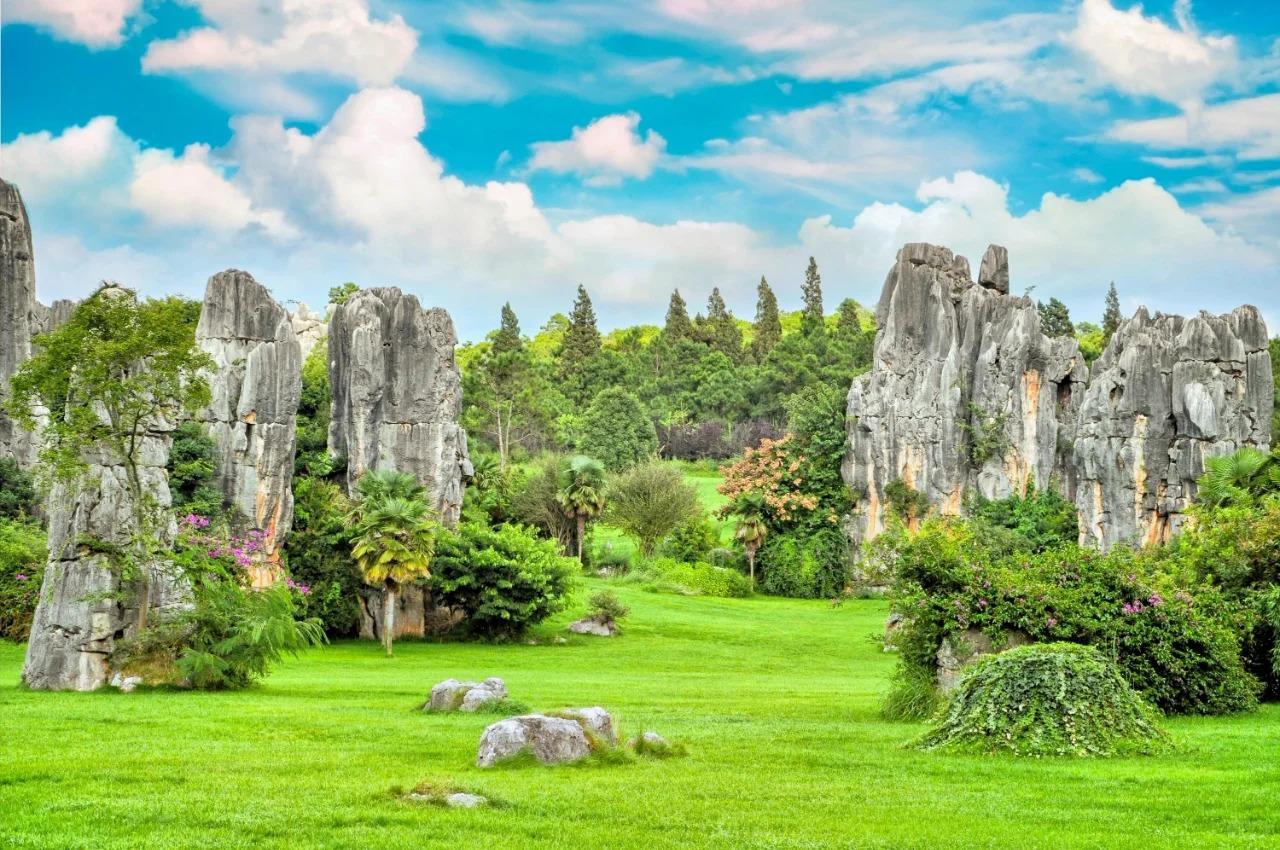Visiting Information
| Information | Details |
|---|---|
| Chinese Name | 石林 (Shílín) |
| Location and Address | Shilin Yi Autonomous County, Kunming, Yunnan Province, China |
| Opening Time/Hours | 8:30 AM – 6:00 PM daily |
| Entrance Fee | 175 CNY (peak season: March to November) 140 CNY (off-season: December to February) |
| How to Get There | By Bus: Take a direct tourist bus from Kunming East Bus Station By Taxi: About 1.5 hours drive from Kunming city center Note: There is no metro service to Stone Forest |
| Best Time for Visit | April to October (comfortable weather and lush vegetation) |
| Contact Info | Tel: +86 871 6711 8999 Email: [email protected] |
Overview
The Stone Forest, or Shilin in Chinese, is a spectacular set of limestone formations located in Yunnan Province, China. Covering an area of 350 square kilometers (135 square miles), it’s known for its towering karst peaks that create a stone forest landscape. This natural wonder is one of the most famous attractions in Yunnan and has been listed as a UNESCO World Heritage Site since 2007.
Historical Background
The Stone Forest began forming about 270 million years ago when the area was a vast sea. Over time, the seabed rose, and the water receded, leaving behind limestone deposits. Millions of years of erosion by wind and rain sculpted these deposits into the remarkable shapes seen today. The area has been known to the local Sani people, a branch of the Yi ethnic group, for thousands of years and features prominently in their folklore and traditions.

Architectural Features
- Major Stone Forest: This is the core scenic area, featuring the most concentrated and spectacular stone formations. It includes famous sites like the Sword Peak Pond and the Stone Forest Lake.
- Minor Stone Forest: Smaller than the Major Stone Forest but equally impressive, this area offers a more secluded experience with intricate stone formations and caves.
- Naigu Stone Forest: Located to the northeast of the main scenic area, this darker limestone forest has a more primitive feel and is less crowded.
- Long Lake: A karst lake surrounded by stone formations, offering boat rides and a different perspective of the landscape.
- Zhiyun Cave: A large karst cave system featuring stalactites, stalagmites, and underground streams.
Cultural Importance
The Stone Forest holds great cultural significance, especially for the Sani people. It’s central to their creation myth involving Ashima, a beautiful girl who was turned to stone. The area hosts the annual Torch Festival, a traditional Yi celebration. The unique landscape has also inspired Chinese art and literature for centuries, appearing in numerous paintings, poems, and stories.
Surrounding Attractions
- Jiuxiang Scenic Area: Known as the “Museum of Karst Caves,” this area features numerous karst caves, underground rivers, and waterfalls. It’s about 90 kilometers from the Stone Forest and offers a complementary karst landscape experience.
- Yunnan Ethnic Village: Located in Kunming, this theme park showcases the cultures of Yunnan’s 26 ethnic minorities. It’s an excellent place to learn about the diverse traditions and customs of the region, including those of the Sani people.
- Dianchi Lake: The largest freshwater lake in Yunnan, located in Kunming. It offers scenic views, boat rides, and several parks along its shores, providing a relaxing contrast to the Stone Forest’s rugged landscape.
- Kunming Golden Temple: A Taoist temple complex featuring a golden-tiled roof, located on Mingfeng Hill in Kunming. It’s one of the largest copper temples in China and offers beautiful views of the surrounding area.

Photography Opportunities
- Ashima Rock: This famous rock formation, named after the legendary Sani girl, is one of the most photographed spots in the Stone Forest. The best time to capture it is during the golden hours of sunrise or sunset.
- Sword Peak Pond: This small lake reflects the surrounding stone pillars, creating stunning mirror images. Early morning is ideal for capturing the reflections when the water is often at its calmest.
- Lion Pavilion: Situated on a high point, this pavilion offers panoramic views of the Stone Forest. It’s an excellent spot for landscape photography, especially during the dramatic lighting conditions of early morning or late afternoon.
- Sani People: The local Sani people in their colorful traditional dress provide excellent opportunities for portrait and cultural photography. Always ask for permission before taking photos of individuals.
- Long Lake: The combination of karst formations and water creates unique photo opportunities. Consider taking a boat ride for different perspectives and to capture the interplay of light and reflection on the water’s surface.
Modern Importance
- Geological Research: The Stone Forest is a significant site for studying karst topography and geological processes. It provides valuable insights into the formation and evolution of karst landscapes over millions of years.
- Tourism Economy: As one of Yunnan’s premier attractions, the Stone Forest plays a crucial role in the local and regional tourism industry. It attracts millions of visitors annually, contributing significantly to the area’s economic development.
- Cultural Preservation: The site serves as a living museum for Sani culture, helping to preserve and promote the traditions, legends, and way of life of this ethnic minority group.
- Environmental Conservation: The Stone Forest’s status as a UNESCO World Heritage Site has heightened awareness about the importance of preserving unique karst ecosystems and biodiversity in the region.
- Educational Value: The site offers invaluable educational opportunities in geology, ecology, and cultural studies. It serves as an outdoor classroom for students and researchers from around the world.

FAQ
- What is Stone Forest famous for?
Stone Forest is famous for its extraordinary karst landscape featuring towering limestone formations that resemble a forest made of stone. It’s renowned for its unique geological features and cultural significance to the local Sani people. - What’s inside Stone Forest?
Inside Stone Forest, visitors will find various areas of karst formations, including the Major and Minor Stone Forests, Naigu Stone Forest, Long Lake, and Zhiyun Cave. There are also cultural exhibits, walking paths, and viewing platforms. - Is Stone Forest free?
No, Stone Forest is not free. There is an entrance fee that varies depending on the season, with peak season (March to November) being more expensive than off-season (December to February). - Is Stone Forest worth visiting?
Yes, Stone Forest is definitely worth visiting. It offers a unique geological landscape, rich cultural heritage, and beautiful natural scenery. It’s considered one of the must-see attractions in Yunnan Province. - What to do in Stone Forest?
Visitors can explore the various stone formations, take guided tours, enjoy boat rides on Long Lake, visit caves, learn about Sani culture, take photographs, and hike through the scenic areas. - How do I get to Stone Forest in the local city?
From Kunming, the capital city of Yunnan Province, you can take a direct tourist bus from Kunming East Bus Station to Stone Forest. The journey takes about 1.5 hours. Alternatively, you can take a taxi or join a guided tour from Kunming. - How to visit Stone Forest?
Plan to spend at least half a day at Stone Forest. Wear comfortable walking shoes and bring water. Consider hiring a guide to learn about the geology and legends. Follow the marked paths and use the shuttle buses within the scenic area to cover more ground. Visit early in the morning to avoid crowds and enjoy better lighting for photography.



